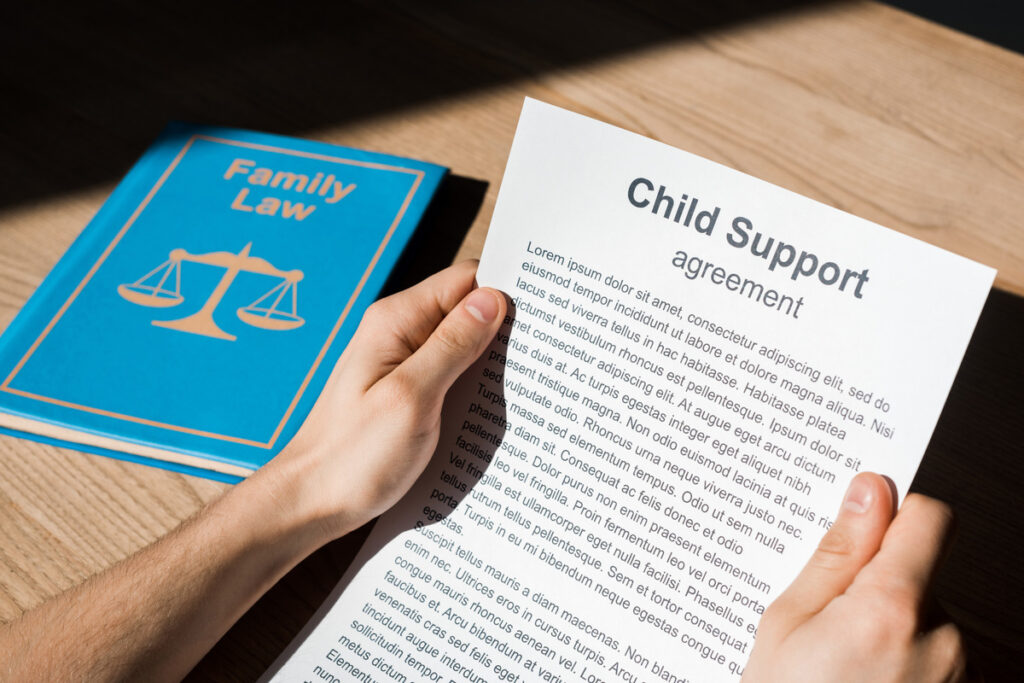When it comes to child support, many parents wonder how it affects their taxes. Understanding the tax implications of child support payments is critical for both payers and recipients. This blog will explain clearly whether child support is taxable, how it impacts your taxes, and what you should be aware of when managing child support payments.
Is Child Support Considered Taxable Income?
No, child support is not considered taxable income. If you are the parent receiving child support, you do not need to report it on your tax return. The IRS treats child support payments as a personal obligation rather than a source of income. As a result, you won’t be taxed on the money you receive for the care of your child.

Child Support Is Not Taxable Income: Child support payments are not treated as income by the IRS. If you are a parent receiving these payments, you are not required to report them on your tax return. This means that child support does not increase your taxable income, allowing you to avoid paying taxes on the money received for your child’s care.
IRS Classification of Child Support: The IRS classifies child support as a personal obligation of the parent who pays it, rather than as income for the receiving parent. This distinction is important because it determines how both parents report or don’t report the payments on their tax returns. Unlike alimony or wages, child support payments are specifically designed to support the well-being of the child and are not seen as earnings for the custodial parent.
Why You Don’t Pay Taxes on Child Support: Since child support is viewed as a legal responsibility of the paying parent to help provide for the child’s needs, the recipient parent is not benefiting from this payment as personal income. Instead, it is meant solely to cover expenses related to the child’s upbringing, such as food, clothing, education, and medical care. Consequently, child support payments are tax-free for the recipient.
Tax Reporting Exemption: If you are receiving child support, you don’t have to include it in any financial documents when filing your taxes. It’s one less item to account for in your tax return, making the process easier. This exemption helps prevent an additional financial burden on the parent who receives child support, ensuring they can focus on using those funds for the child’s needs.
This classification provides a clear benefit for parents receiving support, as they are not responsible for paying taxes on these funds.
Can You Deduct Child Support Payments?
If you are the parent paying child support, you may wonder if you can deduct those payments on your tax return. Unfortunately, the answer is no. Child support payments are not tax-deductible. The IRS sees these payments as a fulfillment of your financial responsibility to your child, not as a deductible expense.
How Does Child Support Affect Your Taxes?
Child support has no direct effect on your taxes. It doesn’t count as income for the recipient, and it can’t be deducted by the payer. However, other factors related to child custody and support, like who claims the child as a dependent, can impact your tax situation.

No Direct Tax Impact: Child support does not have a direct effect on your taxes. For the recipient, it is not considered income, so it does not need to be reported on tax returns. For the payer, child support payments cannot be deducted from taxable income. The IRS treats these payments as a personal obligation, not a tax-related transaction.
Child Support Is Not Taxable Income: For the parent receiving child support, the money is exempt from taxation. It is not considered income, which means there is no need to include it when filing taxes. This ensures the custodial parent is not financially burdened by additional tax responsibilities.
No Deduction for the Payer: For the parent making child support payments, it is important to understand that these payments cannot be deducted from your taxable income. Unlike other expenses, such as alimony (under pre-2019 rules), child support is not eligible for any tax write-offs. The IRS views it as a responsibility rather than a tax-deductible obligation.
Impact of Claiming the Child as a Dependent: While child support itself does not affect taxes, the issue of who claims the child as a dependent can significantly impact your tax situation. Generally, the custodial parent (the one with whom the child lives the majority of the time) is entitled to claim the child as a dependent on their tax return. This allows the parent to take advantage of tax benefits such as the Child Tax Credit, Earned Income Tax Credit, and other deductions related to the child’s care.
Negotiating Dependent Status in Divorce Agreements: In some cases, parents may agree to alternate who claims the child as a dependent each year, or the non-custodial parent may be allowed to claim the child. This should be outlined in the divorce or child custody agreement. The tax benefits from claiming a dependent can make a notable difference in your tax refund or liability, so it’s important to clarify these terms during the legal process.
Tax Credits and Deductions for the Custodial Parent: When the custodial parent claims the child, they may be eligible for certain tax credits and deductions, such as the Child Tax Credit or Child and Dependent Care Credit. These credits help offset the costs of raising a child, potentially lowering the overall tax bill for the parent who claims them.
Who Claims the Child as a Dependent?
Generally, the custodial parent—the parent with whom the child lives most of the time—has the right to Declare the child as a dependent on their tax return. Claiming a child as a dependent can provide tax benefits, such as the Child Tax Credit or the Earned Income Tax Credit. In some cases, parents agree to alternate years for claiming the child or may include specific terms in their divorce agreement.
- Custodial Parent’s Right to Claim the Child: In most cases, the custodial parent—defined as the parent with whom the child lives for the majority of the year—has the right to claim the child as a dependent on their tax return. The IRS allows this parent to receive valuable tax benefits that can help reduce their overall tax liability. Since the custodial parent is typically responsible for the child’s day-to-day needs, the tax benefits are intended to support these ongoing expenses.
- Tax Benefits for Claiming a Dependent: Claiming a child as a dependent offers several significant tax advantages. For instance, the parent may qualify for the Child Tax Credit, which provides a tax credit of up to $2,000 per child. Additionally, the Earned Income Tax Credit (EITC) is available to lower-income parents, providing a substantial refund boost for qualifying families. These tax benefits can ease the financial burden of raising a child by reducing the overall amount of tax owed or even increasing the refund.
- Other Tax Credits and Deductions: Beyond the Child Tax Credit and EITC, the parent claiming the child as a dependent may also be eligible for the Child and Dependent Care Credit, which helps offset costs for childcare, and other deductions related to the child’s education or healthcare. These tax incentives are designed to support parents in covering the various expenses associated with raising a child.
- Alternating Dependent Status Between Parents: In some cases, divorced or separated parents may agree to alternate who claims the child as a dependent each year. This arrangement is typically outlined in the divorce or custody agreement to ensure clarity and prevent conflicts. Alternating the dependent claim allows both parents to share in the tax benefits, especially if both are financially supporting the child. However, the IRS still prioritizes the custodial parent’s right to claim the child unless there is a written agreement specifying otherwise.
- Form 8332 for Non-Custodial Parent Claims: If the non-custodial parent is allowed to claim the child as a dependent, the custodial parent must complete IRS Form 8332. This form serves as written permission, granting the non-custodial parent the ability to claim the child for that tax year. The form should be signed and attached to the non-custodial parent’s tax return to avoid any disputes or audits.
- Including Dependent Status in Legal Agreements: It is essential for parents to include specific terms about who will claim the child as a dependent in their divorce or custody agreement. Clear instructions in the agreement can help prevent misunderstandings and disputes during tax season. Without proper documentation, the IRS will default to allowing the custodial parent to claim the child, which could lead to complications if both parents attempt to claim the child without an agreement in place.
By understanding who has the right to claim the child as a dependent and the tax benefits involved, parents can ensure they make informed decisions and maximize their tax advantages.
What About Alimony? Is It Taxable?

It’s important to note that alimony and child support are treated differently for tax purposes. Alimony used to be taxable for the recipient and tax-deductible for the payer under pre-2019 rules. However, as of 2019, alimony is no longer taxable or deductible for any divorce agreements made or modified after that year. This is separate from the rules regarding child support, which has never been taxable or deductible.
Conclusion
Understanding the tax treatment of child support payments is essential for parents involved in custody agreements. Child support is not considered taxable income, and the parent paying it cannot deduct it on their tax return. To ensure you’re managing your finances properly when dealing with child support, it’s always a good idea to consult with a tax professional.

Call to Action
If you have more questions about child support, taxes, or custody agreements, reach out to an experienced family law attorney at Bobbie Young Law who can provide personalized advice based on your situation. Call now!
Your Legal Solution Starts Here
Clear, practical legal advice you can count on when it matters most